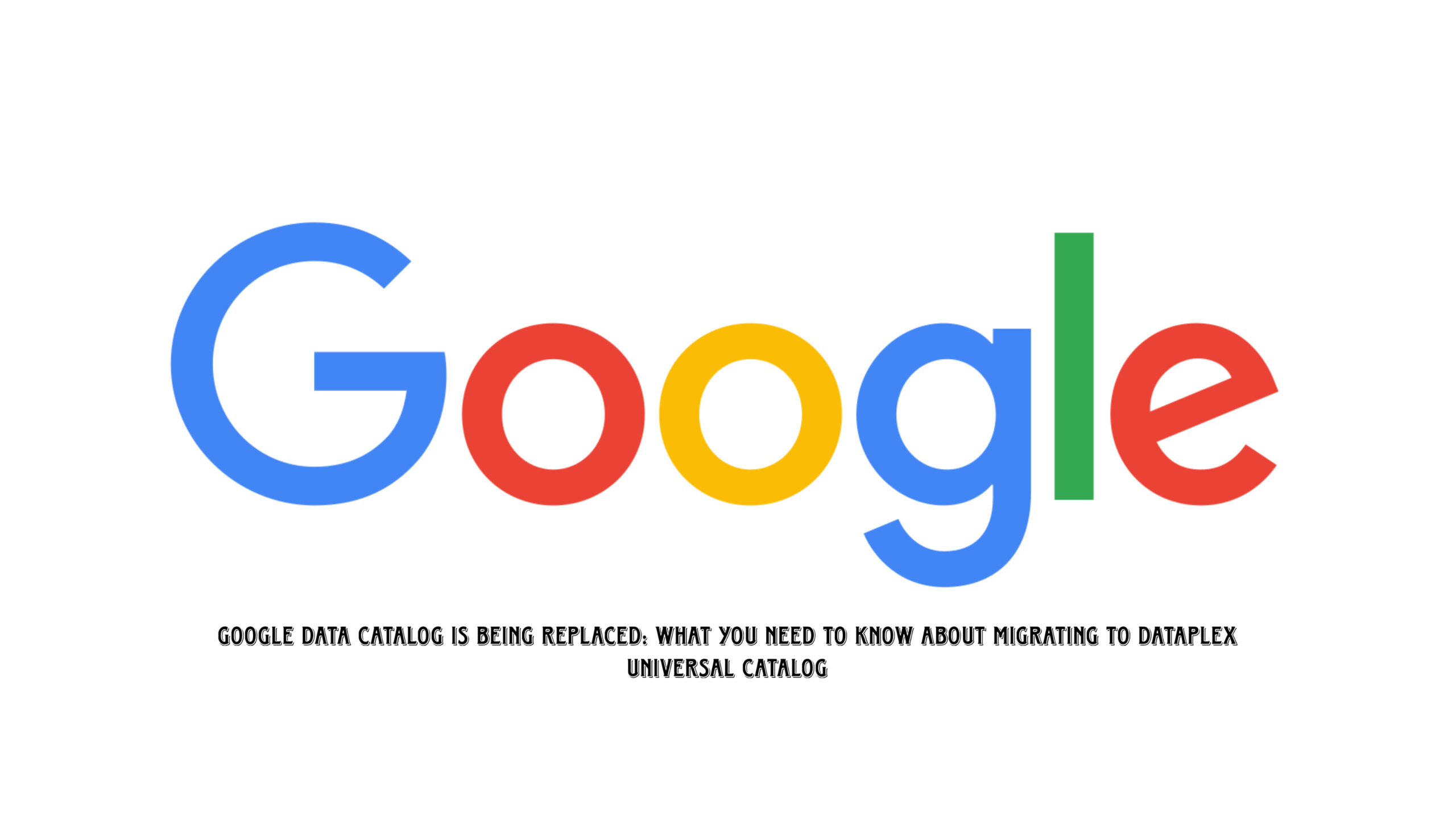Google Cloud has officially announced that the legacy Data Catalog service will be discontinued on January 30, 2026. It’s being replaced by the Dataplex Universal Catalog, a more powerful, unified, and AI-driven metadata platform.
If you’re wondering whether this change affects you or if migration is even necessary, this post breaks down everything you need to know.
📢 Why Is This Change Happening?
Google is retiring Data Catalog in favor of Dataplex Universal Catalog, which provides:
- A unified inventory of metadata across Google Cloud, on-premises, and external sources
- AI-powered data discovery
- Enhanced governance with business glossaries
- Terraform support and better IAM alignment
Dataplex also supports new use cases like data mesh, data lineage, data quality, and AI asset cataloging — all within one central system.
⏳ Is Migration to Dataplex Necessary?
✅ YES – If You:
- Use Data Catalog tags, tag templates, entry groups, or custom metadata
- Use Data Catalog APIs, CLI tools, or Terraform scripts
- Have data governance, compliance, or classification workflows tied to Data Catalog
- Are using Sensitive Data Protection tools that rely on metadata tagging
❌ NO – If You:
- Only run BigQuery queries and don’t use Data Catalog metadata features
- Don’t use any Data Catalog APIs, templates, or tagging
- Are unsure — but a quick audit of your GCP usage is strongly recommended
🔍 What Happens If You Don’t Migrate?
If you rely on Data Catalog and don’t migrate:
- Metadata tagging will break
- APIs will stop working
- IAM policies may no longer apply
- Features like lineage, tag-based discovery, or data profiling will no longer function
Google has made it clear: after January 30, 2026, Data Catalog will be shut down permanently.
📌 Step-by-Step Migration Plan
1. Audit Your Usage
- Tag templates
- Entry groups
- APIs in scripts
- Terraform modules
2. Opt-In to Dataplex Replication
- Set private templates to public
- Enable replication of metadata to Dataplex
- Check IAM permissions — especially if using custom roles
3. Upgrade Metadata
- Templates → Aspect Types
- Tags → Aspects
- Entry groups → Entry groups in Dataplex
4. Update Workloads
- Switch from Data Catalog APIs to Dataplex APIs
- Update Terraform modules and CI/CD pipelines
5. Migrate Sensitive Data Protection
- Use the new “Send to Dataplex Catalog as aspects” action
- The older “Send to Dataplex as tags” will stop working on September 30, 2025
🧠 What’s New in Dataplex?
- AI-assisted discovery: Natural-language search, recommendations, and relevance ranking
- Business glossaries: Standardize data terminology across teams
- Data lineage & quality scoring: Know where your data comes from and how reliable it is
- Terraform & API automation: Easily manage metadata with IaC
🛠 Resources to Help You
✅ Final Thoughts
If you’re using Data Catalog for anything beyond basic queries, migrating to Dataplex is not optional — it’s essential to ensure continuity, governance, and the future-proofing of your data workflows.
Don’t wait until the last minute. The earlier you start the migration, the smoother your transition will be.
Need help auditing your usage or planning the migration? Drop your questions in the comments or reach out — we’re here to help you make the switch confidently.



